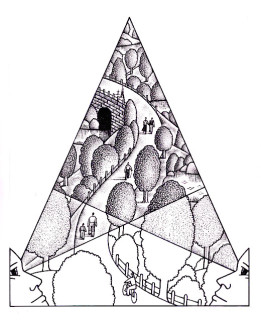Read an excerpt from this article below. You can download the full article by using the link at the end of the excerpt.
Up until a few years ago, greenways were largely considered just a recreational amenity by transportation professionals and local residents. But a shift in thinking has started to happen. People begin by using the trails for recreation, but then start finding ways to access them from local streets. From there, it’s not long before these interconnected networks are used for everyday transportation.

According to a recent USA Today/Gallup Poll, 84 percent of Americans are changing their travel habits in response to the gas crisis. Where folks once thought nothing of hopping in the car for every trip, they are now consolidating errands, carpooling, taking transit, and yes, bicycling and walking whenever they can. Bike shop owners like Hervey Hawk at Cycle Cave in Albuquerque are doing a brisk business in repairs for people who are “dragging 30 and 40 year old bikes out of the garage” so they can ride them to work.
Adding to people’s desire for bike and pedestrian routes — particularly greenway trails — is the growing nationwide concern over the public health problems related to our sedentary lifestyles. According to Keith Laughlin, president of Rails-to-Trails Conservancy, “the more trails and greenways we can help create and connect in communities, the more opportunities people will have to be active in their transportation, burning calories instead of carbon.”
Veteran greenways planner Charlie Denney of Alta Planning + Design says people at public workshops are no longer asking, “why should we spend money on trails?” but “when can we get them under construction?”
What Are Greenway Trails?
A greenway is any open space corridor that is managed for conservation, recreation, and/or transportation. A greenway trail is a linear corridor with protected status that provides public access for recreation or transportation. Greenway trails can be found within natural corridors, such as a riverfronts, stream valleys, or ridgelines, or within man-made routes, such as railroad or utility rights-of-way, canals, or scenic roads.
A cost-effective, low-impact way to connect people and places together, greenway trails typically link parks, nature reserves, cultural features, or historic sites with each other and with communities. They can be paved or unpaved, and designed to serve a variety of trail users, including hikers, walkers, joggers, bicyclists, skaters, horseback riders, and people with disabilities.
Communities of all sizes are designing greenways that tie into streets and sidewalks, forming one continuous bicycle/ pedestrian network. For example, the East Coast Greenway plan for Philadelphia aims to connect major tourist destinations and city neighborhoods into Center City. The Louisville Loop will connect more than one hundred miles of trails and sidewalks throughout Kentucky’s largest city, while rural Montgomery County, Virginia, recently completed a plan to link five villages within a 388-square mile area.
End of excerpt
… the article continues with sections covering:
— Organize: Cultivate a sustainable, citizen-led advocacy group with strong leadership and a clear vision.
— Plan: Create a plan that enjoys broad public support.
— Build: Acquire right-of-way and construct well-designed paths.
— Operate: Administer and maintain the greenway system.
Hannah Twaddell is President and founder of Twaddell Associates, LLC, a consulting practice specializing in community planning, public engagement, facilitation, and education. Based in Charlottesville, Virginia, the firm provides planning, facilitation, and educational services to communities, government agencies, and private organizations across the U.S.
Before setting up Twaddell Associates, Hannah was a Senior Transportation Planner with Renaissance Planning Group, where she has worked on transportation planning and public involvement projects in several states. Prior to that, she served as Assistant Director of the Thomas Jefferson Planning District Commission (in Charlottesville) and as chief staff to the Charlottesville-Albemarle Metropolitan Planning Organization.